China’s influencer marketing industry is three to five years ahead of the rest of the world. The advanced functionality and integration of social media, e-commerce, and digital payment in China has enabled business models that are yet to be explored in other countries.


Influencer incubators utilize a fast-fashion model to compress the concept-to-consumer timeline. Every step of the product development life-cycle is designed to be shared on social media by the influencer. With product development to marketing under one roof and brand advocates interacting throughout the process, culturally relevant products aim to birth new trends on social media. Social platforms are influencer brand tools used to ask consumers what they want, rather than telling them.
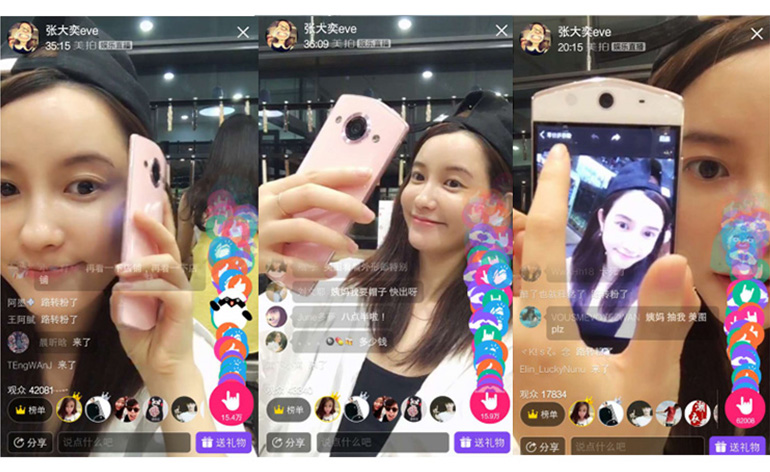
Many believe influencer brands are the future of the e-commerce industry in China and it is very likely this will become a global phenomenon.
E-commerce Influencers
Social commerce refers to the integration of social media and e-commerce or vice versa, which is a significant trend in China. For years now, virtually all major social media platforms in China have had full-integrated native e-commerce and digital payment solutions. You can see hints of this type of integration popping up in the West on platforms like Instagram and Snapchat. However, what might be even more interesting is retailtainment and how Chinese e-commerce sites have transformed into social media platforms.
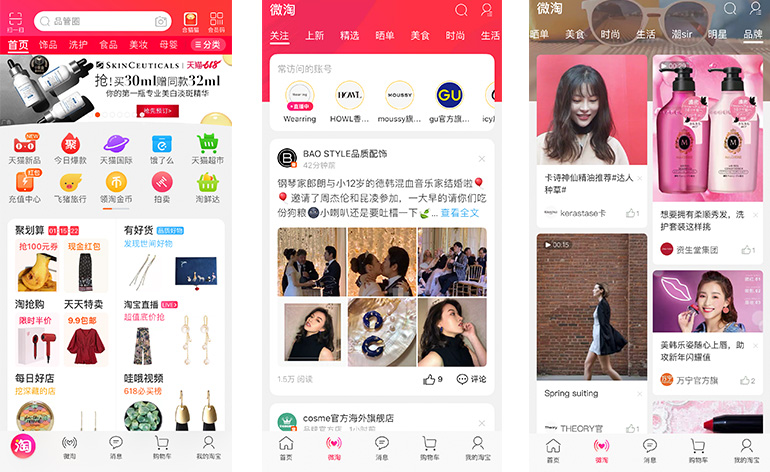
Alibaba, with its popular e-commerce live-streaming platforms Taobao Live, Tmall Live, and recent investment in popular cross-border commerce platform Little Red Book (Xiaohongshu), is at the forefront of social commerce and retailtainment. Alibaba has enriched the e-commerce experience with a content-rich interface that includes video, live streaming, and full social media capabilities. About 60 to 70 percent of Tmall and Taobao’s mobile apps are all about content. Content encourages e-commerce shoppers to “hang out” as if they were on a social media or content platform, which is a distinct advantage for influencer brands and an opportunity for brands that leverage popular e-commerce influencers.
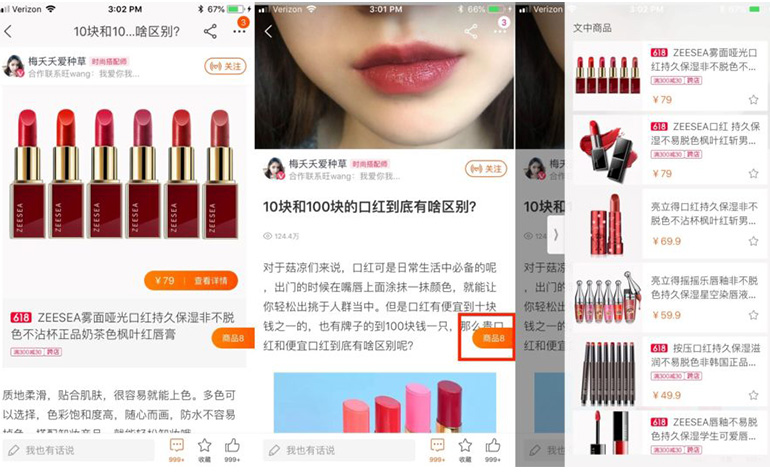
Center: Taobao article with products tab. Right: All available products.
The world of content and commerce has already changed in China, and while Western developers and marketers may be hesitant to mix business with pleasure overtly, Chinese consumers have embraced this new era of retailtainment. China has proven what’s possible, and now it’s up to Western brands to realize what next.
Social Search Optimization (SSO)
The traditional internet search engine is already on the decline in China. China’s mobile users are turning to social media and e-commerce platforms to conduct search queries. China’s social and e-commerce app have highly sophisticated search algorithms that mimic traditional search engines. Social search engines, like the one on WeChat, allow users to search not only the web but social media posts, private conversations, and mini-programs.

The next generation of search is happening on social media and the platforms know it, so they have created content optimization rules that are very similar to those used by Google and Baidu. The social media and cross- border e-commerce platform Xiaohongshu is often referred to as a Social Recommendation Engine. Xiaohongshu has designed social profiles to act more like websites and social media posts to be more like web pages. If a Xiaohongshu influencer wants their content to rank well in search, they must select a target keyword and use it in the title, the first paragraph, and through the written content with a .05% usage density, preferential treatment is also given to posts that include short-video.
What is especially important is that influencers hold a unique advantage in the next generation of search because social search algorithms take follower count, comments, reposts, and likes into account when calculating a post’s rank.
If social media platforms in the West have a chance to disrupt Google, they’ll more than consider the opportunity like their Chinese counterparts.
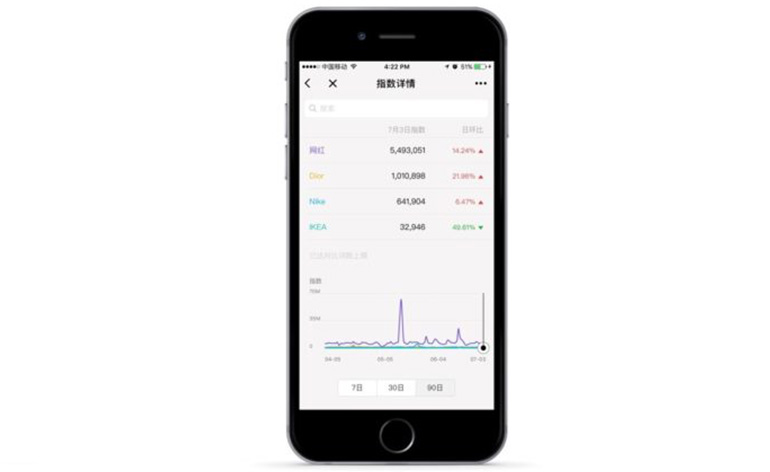
Official Influencer Marketing Platforms
Influencer marketing is big business in China, and it’s only getting bigger. Local consultancy Analysis International projected that the China influencer economy was worth over $15.5 billion in 2018. While influencers are hands-down the best method out there for brands to succeed in China, Chinese social media platforms are not making it easy for brands to work with them. Influencer marketing costs are a total enigma, platforms provide very little data, organic reach is declining, and now, on top of that, Chinese social media platforms are starting to monetize off of the success of influencer marketing by charging brands a fee to run a sponsored post with an influencer.
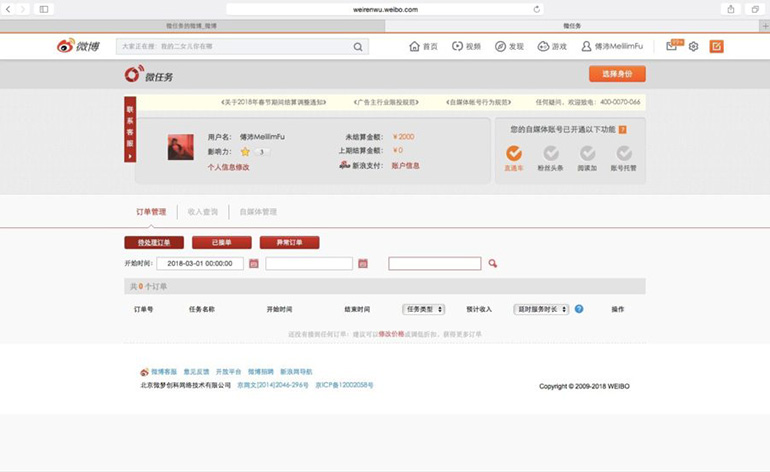
In the past, Chinese social media platforms had very few requirements when it came to sponsored content. Brands merely needed to connect with the influencer, or the influencer’s agent, to arrange the campaign and set pricing (a process which is confusing enough in and of itself). However, now almost every platform inserts themselves in the middle of that process, creating their influencer agency-type channels which brands, agencies, and influencers are required to navigate to publish sponsored content.
The practice of building virtual walled gardens that where brands pay to work with influencers is a scenario that’s very likely to be adopted in the future by social media platforms in the West.
Influencer-led Creative Studios
In 2018, the emergence of influencer-led creative studios started to disrupt traditional ad agencies and production companies in China. Influencer-led creative studios are now directly competing with Chinese ad agencies for brands’ content creation projects.
Influencers cannot stay young forever. While some influencers create brands, others are launching creative studios. Building a studio is a long-term play that utilizes influencers network and knowledge. Furthermore, maintaining a brand around one’s personality is exhausting and limits how much content they can produce or sponsorships they can accept.

In China, there has been a mass exodus of talent from industries like print media with many of the professional writers and photographers joining influencer-led creative studios or becoming influencers themselves. China’s influencer industry is sucking up talent, as it is generally seen as more interesting, freeing, and provides better opportunities.
Influencer-created content has one key advantage when compared to traditional production companies or ad agencies: social is in their DNA. Influencers have gone through the grind of developing audiences in a mobile-first social media world, whereas professionals at traditional agencies might have little-to-no hands-on experience with how content will be engaged with or received online. For the employees that work at traditional agencies, their work is their job. For influencers, their work is their life. Influencers are entrepreneurs whose work and personal lives are public for all to see. Their failures will be public. Moreover, the pressure to perform at one’s peak is much higher than the salaried employee at an agency.
It’s an inevitable development among influencer around the world where entrepreneurship is booming, and business models are constantly challenged and disrupted. Professional writers, photographers, and videographers are looking for work as magazines and traditional TV decline. A surge of influencer production studios or influencer-created creative agencies is likely just around the corner in all parts of the world.
Influencer Marketing East and West
Modern influencer marketing is a global phenomenon, and it’s a force that business and the media need to understand.
The range of human interests is limitless and is not adequately served by mass media. With the advent of individualized, or rather social, media people can now form social environments that congregate around niche interests. Every interest niche will have a few experts or entertainers that lead by creating written, visual, or audio content for the community’s education and/or entertainment.
People have been empowered by the internet to create, share, and consume the content they find most interesting, and this is only going to become more entrenched in internet social culture.
It simply does not make sense for any single brand to try and serve the boundless interests of their target customers on social media. Instead, it makes sense to support the people who do.
It is true that China is unique in that Chinese society’s high-context culture and relationships built on reciprocity underpin its thriving influencer economy. However, China has been and is paving the way in social media, e-commerce, and mobile payments, and the rest of the world is following. Brands should not miss this incredible opportunity to communicate with people the way they want to be communicated with. It’s not about being top of mind or being mentioned by an influencer, but about building relationships founded on reciprocity.
Key Takeaways
China’s influencer marketing industry is three to five years ahead of the rest of the world. The advanced functionality and integration of social media, e-commerce, and digital payment in China have enabled business models that are yet to be explored in other countries.
Unlike influencers in the West who rely on the traditional sponsored-post monetization model, many influencers in China have created their own incredibly successful brands, manufacturing and selling their products specifically designed for their audience, achieved through the support of influencer incubators.
For years now, virtually all major social media platforms in China have had full-integrated native e-commerce and digital payment solutions. Conversely, with the rise of ‘retailtainment’, Chinese e-commerce sites have also now transformed into social media platforms.
The traditional internet search engine is already on the decline in China. China’s mobile users are turning to social media and e-commerce platforms to conduct search queries. Social search engines, like the one on WeChat, allow users to search not only the web but social media posts and private conversations. Influencers are big business in China and Chinese social media platforms are starting to monetize off of the success of influencer marketing by charging brands a fee to run a sponsored post with an influencer.
Influencer-led creative studios have started to disrupt traditional ad agencies and production companies in China, directly competing with ad agencies for content creation projects.
Article originally published on Lengow, republished with permission.
Cover image: Melilim Fu










